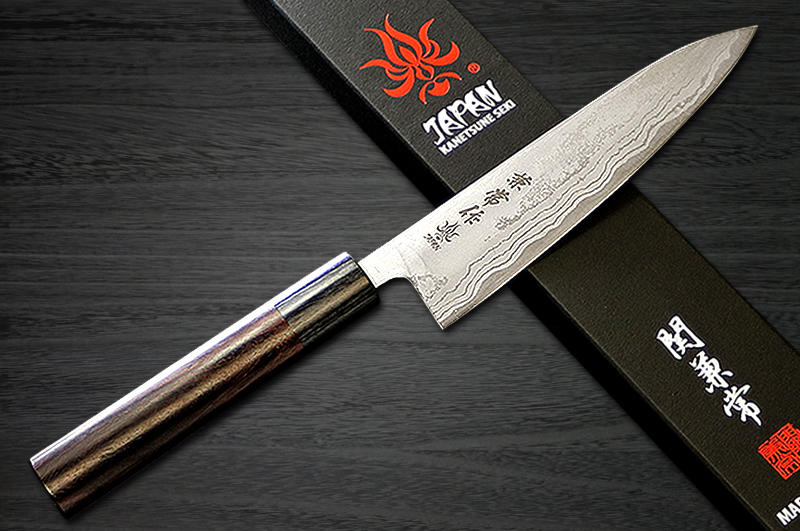img by : https://www.hocho-knife.com/
The realm of culinary knives is a fascinating confluence of tradition, metallurgy, and artistry. Among the distinguished steel types, Japanese Blue Steel, known as “Aogami” in Japanese, stands out for its exquisite sharpness and hardness. This steel type is cherished by chefs and blade aficionados alike. However, it brings along a set of advantages and disadvantages that are worth exploring for the discerning knife enthusiast.
Advantages of Blue Steel Knives:
Exceptional Sharpness:
Blue Steel is famed for its ability to be honed to a razor-sharp edge. This allows for precise cuts and a high degree of control, which is especially treasured in delicate and detailed culinary tasks.
Superior Edge Retention:
The high carbon content and the additional elements like tungsten and chromium in Blue Steel contribute to excellent edge retention, meaning the blade remains sharp for longer periods even with regular use.
Hardness and Durability:
Blue Steel knives boast a high Rockwell hardness rating, often ranging from 60 to 65 HRC. This hardness translates to a durable blade capable of withstanding the rigors of a busy kitchen environment.
Prestige and Craftsmanship:
The meticulous crafting process of Blue Steel knives, often forged by skilled artisans, not only imbues a sense of traditional prestige but also results in a knife that is aesthetically pleasing.
Customizability:
Many blacksmiths appreciate the versatility of Blue Steel, crafting it into various traditional Japanese knife styles, each suited for specific culinary tasks.
Disadvantages of Blue Steel Knives:
Maintenance Demands:
Blue Steel is a high-carbon steel which is susceptible to rust and corrosion if not properly maintained. It requires regular cleaning, drying, and occasional oiling to preserve its condition.
Cost:
The craftsmanship, quality, and the manual labor involved in forging Blue Steel knives reflect in their price, making them a significant investment.
Sharpening Skill Required:
While Blue Steel can attain a remarkable sharpness, the sharpening process can be challenging for novices. It requires a certain skill level and the appropriate sharpening tools like a good quality whetstone.
Potential Brittleness:
The hardness of Blue Steel, while a strength, also contributes to its brittleness. The blade can chip if used on hard or frozen foods, or if dropped.
Not Ideal for All Tasks:
Due to their specific design and delicate nature, Blue Steel knives are not suited for all kitchen tasks, especially those requiring a more robust or flexible blade.
In conclusion, Blue Steel knives are a radiant hallmark of Japanese cutlery, offering a blend of traditional aesthetics and modern-day sharpness and durability. While they demand a high level of care and investment, the culinary experience they provide can be seen as unparalleled, making them a prized possession for chefs and knife enthusiasts alike.
